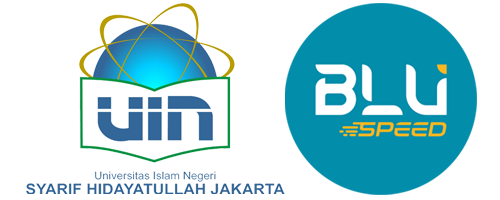Scientific Integration at UIN Jakarta is carried out through a Consortium
Rectorate, UIN News Online – the efforts in integrating Islamic and secular science at UIN Jakarta have been done for a long time, including through a scientific consortium of experts that produces many textbooks. It was very helpful for lecturers and students in understanding Islam and science as a whole.
This was said by the Rector of UIN Jakarta Amany Lubis during the opening of a national webinar entitled “Peluang Integrasi Keilmuan di Era Disrupsi“, Wednesday (07/01/2020) through Zoom application.
Moderated by the Head of LPM UIN Jakarta Muhammad Zuhdi, the webinar presents the former Rector of UIN Malang mam Suprayogo, former Rector of UIN Yogyakarta Amin Abdullah, and Ushuluddin faculty Professor Mulyadi Kartanegara as a speaker.
Rector Amany explained, as an effort to integrate the knowledge, UIN Jakarta has Islamic and Science courses. The course is taught by experienced professors and distributed to all faculties.
“They are also able to translate various cases and phenomena into the language of religion and science,” said Rector.
The Islamic and Science Course, she added, gave universities a unique characteristic about the implementation of scientific integration on the truth of religion which could be seen as being objective and subjective.
“Objective because it can be proven empirically and historically. Whereas subjective because we recognize that the religion that we believe comes from Allah SWT,” she added.
On the other hand, Amany Lubis explained that the concept of scientific integration at UIN Jakarta had several characteristics. First, humanism, which is to explore the potential of human, faith, and natural and to believe in humanization in evolution (social science and prophetic nature. Second, internalization, which is to develop faith and intellectuality by developing the philosophy of science in its three branches: ontology, epistemology, and axiology .
Third, two-way traffic, which explains the relationship between science and religion as well as giving religious arguments to science and scientific arguments on matters related to religious teachings.
Fourth, namely by utilizing the scientific revolutions that exist in each era by upholding the correct interpretation principles and agreed by scholars and intellectuals.
The fifth is wasathiya, which is applied to the field of education in an open-minded manner by combining aspects of Islam, National identity, society, and nature. Sixth, strengthening the scientific tradition for the development of science and technology and competitiveness in all fields of science and professions.
“Some of these characteristics are to motivate various inventions and innovations for the benefit of humanity,” she concluded. (usa/ns)

